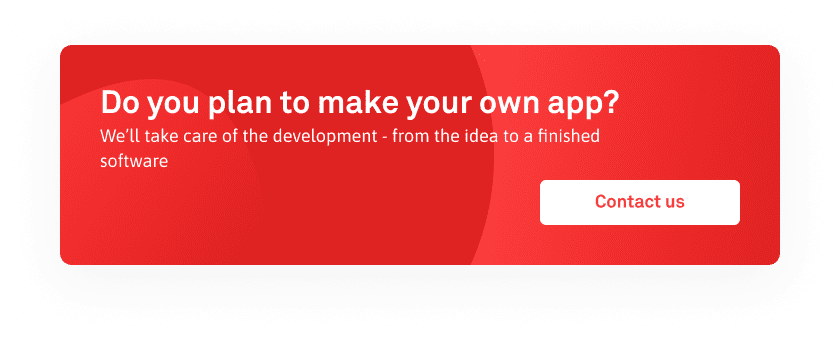Developing a mobile app is an exciting time for you and your business, but many owners will view the process as a daunting task. As a result, many mobile app projects will be placed on hold or never come to fruition.
While the development process is a long process when done properly, a lot of the responsibility will be handled by your development team. This means your main job will be receiving updates and ensuring your app turns out how you expected.
Still, it can be beneficial to know the steps involved when developing a mobile app. You won’t have to do a lot of the direct work, but it’ll help you stay ready and organized while they bring your app to life.
To give you a better idea of what’s involved in mobile app development, we’ve outlined the process in step-by-step format. Use this guide to keep your developers honest and ensure they aren’t skipping any steps!
Step 1: Prioritize, Strategize, and Plan
Most business owners will have a broad idea of what they want their app to provide users with, but that will only be the principle foundation for what’s in store during the first step of mobile app development. This is where brainstorming gets kicked into full-gear and you start to create a master blueprint for your app.
In this step, you’ll largely be meeting with your development team and discussing your goals with the mobile app. Since every app will be targeting a certain demographic, a user persona will be created to outline the target audience.
Using that target audience, you’ll start to decide which platform your app will be made available on, ways you can surpass the current competition in the app store, names for the app, monetization strategies, and anything else that will create a more efficient and productive work environment for your team.
Step 2: Workflow Diagrams & Wireframes
Once you have a solid plan laid out for your new mobile app, it’s time to start putting some visuals together. These will be far from a finished product, but will give you and any investors a general idea of what the app will look like.
First, you’ll want to put together a workflow diagram to ensure your team stays organized throughout the entirety of the project. The workflow diagram will list the specific steps that need to be taken and who will be executing them.
Secondly, you’ll want wireframes to showcase the actual functions of your app. Wireframes can be as simple as a drawing on a napkin using crayons or as complex as a high-fidelity, pixel-specific layout of the different pages.
Step 3: UI/UX Design Concepts & Prototypes
This might seem like a complicated development term, but UI/UX design simply stands for user interface and user experience design. While the main goal of your mobile app is to provide a unique and creative experience for your users, UI/UX design is what’s going to allow you to achieve that.
User experience and user interface are two types of design that work hand-in-hand with each other, but many people will get them confused.
Think of it this way. When you own an app, you’ll essentially have two things to worry about: giving your customers something to interact with and giving them an experience that brings them back for more.
Step 4: Mobile App Development
You’ve got your plan, wireframes, design goals, and workflow diagrams. Now, it’s time for the real fun to begin. During the development stage, your team will be working on two things — front-end development and back-end development.
The front-end development is what the users will see and interact with. You can think of it as the face of your mobile app. On the other hand, back-end development can be thought of as the brain of your mobile app. It’s not what your users will see, but where your developers will make the magic happen.
Step 5: Quality Assurance & Testing
Your development team will be working tirelessly to bring your vision to life, but no mobile app will be ready to be released until it receives proper quality assurance and testing. This stage will bring any bugs, errors, and security issues to the table, while ensuring your mobile app is user-ready.
Your team will go through a series of tests to confirm the user experience, function, performance, and security aspects of your mobile app are to your standards. They will also make sure your mobile app is compatible on the devices and platforms you intended it to be compatible with.
Any issues that are found will require some time to fix, but it’s better to catch them sooner rather than later.
Step 6: Official Release of Mobile App
Eventually, you’ll have a mobile app that has avoided any embarrassing bugs and is ready to be released to your potential users.
Believe it or not, getting your app accepted into the various app stores is easier said than done. If you’ve been paired with a quality development team, they’ll know all the ins-and-outs to getting your app in the hands of your target audience.
Step 7: Ongoing Support & Maintenance
Before you know it, users will start downloading your app and enjoying all the benefits it provides. Things will remain steady, but you’ll need to start planning for the future. The mobile app could experience a bug at any time — not to mention any changes or updates you may want to make.
Since no one will know your mobile app better than the developers that brought it to life, you should always consider keeping them around for ongoing support and maintenance. You won’t have to hire a second team and it will create a more seamless transition when assistance is needed.
Now that you have a solid idea of the 7 main steps involved in mobile app development, it’s time to put your ideas and visions into action!
If you’re ready to get started with your next mobile app project, contact us today and discuss the parameters with one of our professionals.
—
Photo by Gorodenkoff on Shutterstock



